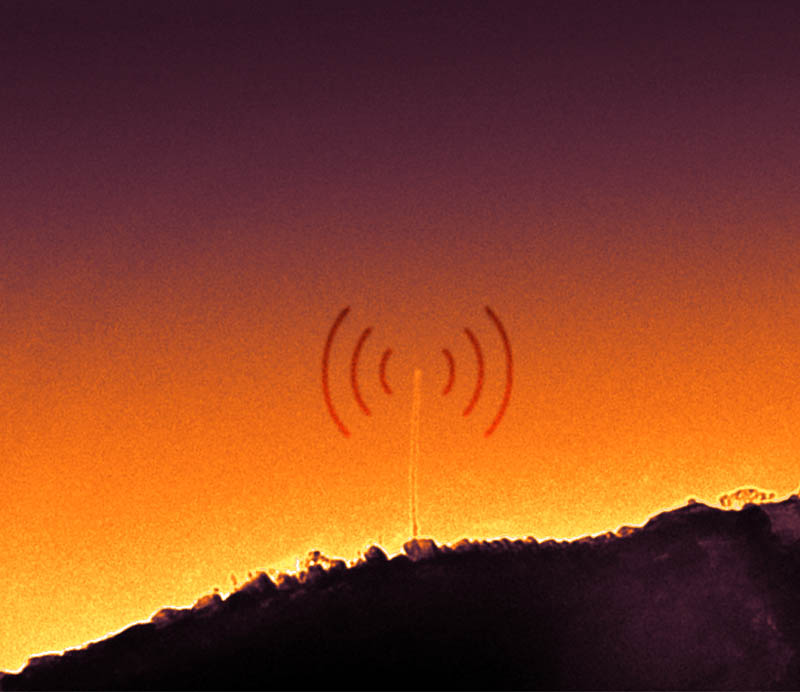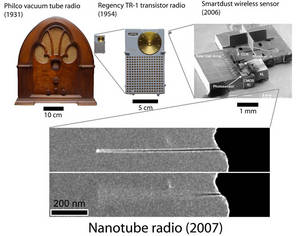Never mind the Nano iPod, a team of researchers at the University of California at Berkeley have built a working radio made from a single carbon nanotube.
 By fixing the tube between two electrodes, it can fulfil all the functions of a radio - acting as an antenna, tuner, amplifier and demodulator. The team showed that their nano radio could tune into a radio signal generated in the room, and play it back through an attached speaker. In fact, the first song that was broadcast to the radio was "Layla" by Derek and the Dominos, ironically followed by "Good Vibrations" by the Beach Boys.
By fixing the tube between two electrodes, it can fulfil all the functions of a radio - acting as an antenna, tuner, amplifier and demodulator. The team showed that their nano radio could tune into a radio signal generated in the room, and play it back through an attached speaker. In fact, the first song that was broadcast to the radio was "Layla" by Derek and the Dominos, ironically followed by "Good Vibrations" by the Beach Boys.
But how does it work? When a radio wave passes across the nanotube, it causes a change in the electrons that are streaming along it, and causes the tube to vibrate. This is the action that effectively "decodes" the radio signal, and transmits the information.
And by lengthening or shortening the nanotube, the researchers were able to control the frequency of the radio signal that the device could receive. Using this technique, the researchers could make the radio work across frequencies that are usually used for commercial radio stations.
 But aside from the novelty value, the technology could be used for many different applications. For example, it could be used in radio-controlled devices that could travel in the human bloodstream or microscopic mobile phone devices. In the long term, the researchers are hoping to develop miniature sensors that can communicate wirelessly.
But aside from the novelty value, the technology could be used for many different applications. For example, it could be used in radio-controlled devices that could travel in the human bloodstream or microscopic mobile phone devices. In the long term, the researchers are hoping to develop miniature sensors that can communicate wirelessly.










Comments
Add a comment